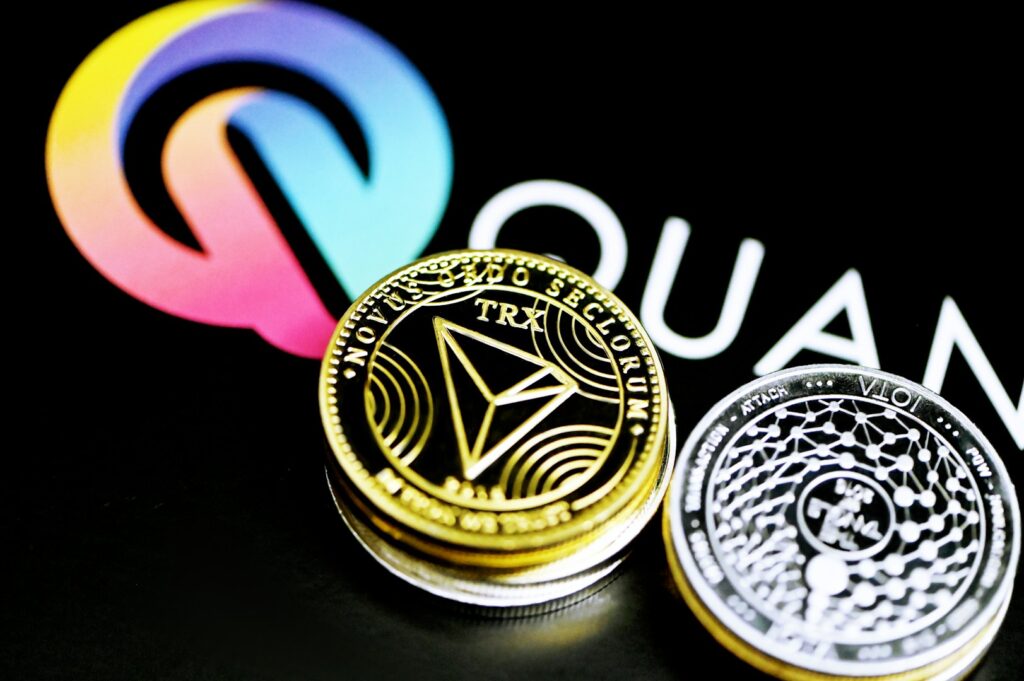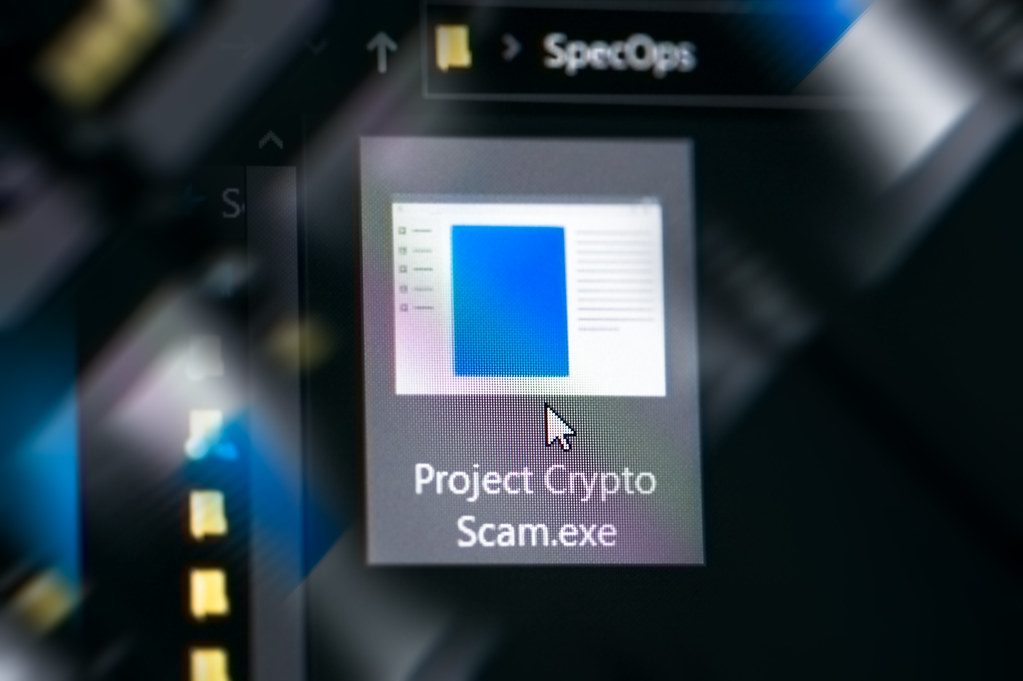From its humble beginnings in the realm of internet forums, cryptocurrency has transformed into a global phenomenon, disrupting traditional finance and capturing the imaginations of investors worldwide. The rapid ascent of digital currencies like Bitcoin and Ethereum has been nothing short of astonishing, offering tantalizing promises of astronomical returns and liberation from the constraints of centralized banking.
And indeed, there’s an undeniable allure to this brave new world of finance. Cryptocurrency represents a fundamental shift, potentially democratizing financial systems and paving the way for groundbreaking innovation. Its decentralized nature offers a sense of freedom and autonomy. This potential – along with the success stories of early adopters – fuels the desire to participate in the crypto market.
However, it’s absolutely crucial to balance this excitement with a sober understanding of the volatility and risk inherent in cryptocurrency investing. Driven by speculation and susceptible to dramatic price swings, fortunes can be both won and lost within the blink of an eye. The fear of missing out (FOMO) can lead to impulsive decisions, which often end in losses.
That’s precisely where this guide comes in. Our goal is to empower you as you take your first steps, or refine your strategies, in the cryptocurrency space. We’ll provide the essential knowledge you need to confidently navigate this thrilling, yet often turbulent, landscape. This journey is built on informed decisions, risk mitigation, and a balanced approach – not hype-driven gambling.
Let’s get started! In the coming chapters, we’ll begin by unpacking the fundamentals of cryptocurrency – what it is, how it works, and the different options available. Then we’ll dive into understanding your personal risk tolerance and craft an investment strategy that aligns with your appetite for risk and reward.
Key Concepts
- Accessibility: Cryptocurrency is an exciting space with incredible learning resources available to anyone, regardless of prior experience.
- Empowerment: This guide is designed to put you in control, with the knowledge to make your own informed choices about cryptocurrency investing.
- Caution: While the potential is great, uncritical hype and blind speculation can prove dangerous. Remember, smart investing starts with smart research.
Let’s begin!
Chapter 1: Understanding Crypto Basics
Let’s demystify the world of crypto! We’re starting at ground zero, breaking down the essentials and laying a solid foundation to build upon.

What is Cryptocurrency?
In the simplest terms, cryptocurrency is a digital or virtual form of money designed to work as a way to exchange value. You can think of it as internet money. The “crypto” part comes from the complex cryptography that enables security and verifies transactions.
Key Properties of Cryptocurrency:
- Decentralization: Most cryptocurrencies aren’t controlled by banks or governments. Instead, they are run by vast networks of computers around the world.
- Transparency: While your identity is usually disguised, many cryptocurrency transactions happen on a public ledger that anyone can view.
- Immutability: Records stored on the ledger (the blockchain – explained next!) are incredibly difficult to change or hack.
Bitcoin’s Founding Role: Bitcoin, the granddaddy of cryptocurrency, introduced these revolutionary concepts back in 2009 and blazed the trail for countless digital currencies to follow.
How Blockchain Technology Works
The true magic of cryptocurrency lies in the underlying technology: the blockchain. Here’s the breakdown:
- Demystifying the Blockchain: Imagine the blockchain as a growing, shared digital database. Think of it as a massive spreadsheet that everyone in the network can see and contribute to, but not alter.
- The Chain of Blocks: When you make a crypto transaction, that information is grouped with other transactions into a “block.” This block gets time-stamped and connected to the previous block, forming an unbreakable chain.
- Consensus Mechanisms: This is how the network agrees on what’s valid. Most famous is Bitcoin’s “Proof-of-Work,” requiring computers to solve complex puzzles to add blocks (known as mining). Newer systems like “Proof-of-Stake” promote better energy efficiency. If you want to read more about consensus mechanisms, you might want to check out this article.
Key Differences Between Major Cryptocurrencies
While they share core fundamentals, not all cryptocurrencies are created equal. Let’s look at some heavy hitters:
- Bitcoin (BTC): The OG. Often viewed as “digital gold,” its main appeal is as a store of value and potentially, a future global currency.
- Ethereum (ETH): Way beyond just a currency, Ethereum’s strength is its programmable blockchain. It fuels apps, “smart contracts,” and a vast ecosystem called Decentralized Finance (DeFi).
Types of Crypto Assets
Brace yourself, the crypto universe goes well beyond simple currencies:
- Stablecoins: Pegged to assets like the US dollar, their goal is reduced volatility (Think Tether – USDT, or USD Coin – USDC).
- DeFi Tokens: These power platforms where you can lend, borrow, or trade crypto without banks. Examples include Aave or Uniswap tokens.
- NFTs: Short for “Non-Fungible Tokens,” NFTs prove ownership of unique digital items – a revolutionary concept for art, collectibles, even in-game assets! If you want to read more about NFTs and about the innovative use cases behind beyond art, you might want to check out this article.
Key Points to Stress:
- Variety: From payment coins to revolutionary platforms, there’s an incredible range of cryptocurrencies with diverse use cases.
- Continuous Evolution: Crypto is a young and exciting space. Prepare for rapid changes and new innovations emerging over time.
That’s just your crypto primer! In the next chapters, we’ll dive into investing strategies and risk management, but always remember, building knowledge is the foundation of all smart crypto journeys.
Chapter 2: Assessing Your Risk Profile
Before diving headfirst into crypto, it’s vital to get a handle on your risk tolerance. Understanding this will guide you in creating a cryptocurrency investment strategy that’s sustainable and supports your goals, rather than causing chaos in your financial life.

Defining Risk Tolerance
In the investment world, risk and reward go hand in hand. Generally, the higher the potential return, the higher the level of risk you’ll have to accept. Think of it as a sliding scale.
- It’s Personal: There’s no “correct” level of risk tolerance. What’s thrilling for one investor might be panic-inducing for another. The key is to figure out where you fall on that risk spectrum.
- Not Static: Over time, your risk tolerance might shift. Factors like age, major life events, and changes in your financial situation all play a role. It’s okay to re-evaluate as the years go by.
Factors Influencing Your Risk Appetite
Here are the key ingredients that shape how much risk you’re comfortable taking:
- Age: Younger folks often have the luxury of time. They can ride out market downturns and wait for recovery, compared to someone closer to retirement, who needs more stability.
- Financial Goals: Saving for a down payment in a couple of years requires a different approach than aiming for a super early retirement through high-risk, high-return investments.
- Financial Situation: If your income is stable, you have ample savings, and low debt, your capacity to handle losses grows. If finances are tight, even small dips can majorly derail your life.
- Emotional Tolerance: Investments shouldn’t keep you up at night. If wild price swings make you sweat and lose sleep, it’s a sign you’ve likely taken on too much risk.
Aligning Crypto Investments with Your Risk Profile
Let’s get practical. How does risk translate into the crypto world?
- Conservative Investors: If you crave stability, it might be wise to keep your cryptocurrency allocation small. Seek safer options like stablecoins, or stick to the most well-established ‘blue chip’ cryptos.
- Moderate Investors: A balanced approach can mean holding established coins like Bitcoin or Ethereum as your base, alongside potentially smaller amounts of newer, riskier projects.
- Aggressive Investors: With an understanding of the wild ride and potential for loss, a higher proportion of your portfolio might be crypto. Volatility won’t scare you if it aligns with your goals.
Tools and Guidance
- Risk Tolerance Questionnaires: These online questionnaires can be a starting point to help you gauge your general comfort level with risky investments.
- Financial Advisors: When in doubt, a qualified advisor helps make tailored decisions. This is especially important if you are new to the investing space or venturing a significant sum into crypto.
Key Points to Stress
- Honesty: Don’t get swept up by dreams of overnight riches. Be truthful with yourself about what level of risk realistically aligns with your needs and personality.
- Crypto’s Place: Compared to things like stocks or bonds, cryptocurrency generally lives on the ‘high-risk’ end of the scale. It’s crucial to understand this when allocating your funds.
Knowing your risk appetite is more than just an exercise – it’s the groundwork for responsible and sustainable crypto investing. Take this assessment seriously. And in the next chapter, we’ll explore ways to actually manage those risks within your portfolio.
Chapter 3: Responsible Portfolio Allocation
The golden rule of investing? Diversification. It’s your safety net in the rollercoaster world of cryptocurrency. By dividing your investments smartly, you’ll not only manage risk but also position yourself to tap into the diverse potential of this exciting space.

The Importance of Diversification
- The “Don’t Put All Your Eggs in One Basket” Analogy: If you drop that basket containing all your investment eggs, whoops! A diversified portfolio means if one investment tanks, others can hopefully cushion the blow.
- Crypto Context: Even within cryptocurrency, there’s vast difference between, say, stablecoins, established giants like Bitcoin, and new experimental projects. Variety means not being completely crushed if one area hits a downturn.
- Mitigating Volatility: Wild swings are commonplace in cryptocurrency. Diversification doesn’t eliminate volatility, but it can make those swings a bit less gut-wrenching.
Determining Your Crypto Allocation
- No Universal Answer: This goes back to your risk tolerance we explored in Chapter 2. Are you a cautious investor just dipping your toes in? Or an aggressive risk-taker? This shapes your crypto percentage.
- Percentage Models: Here are some potential scenarios to spark thinking:
- Conservative: Within your overall investment portfolio, maybe 5%-10% is in cryptocurrency.
- Moderate: Aiming for some crypto gains? Perhaps 10%-25% of your portfolio falls in this higher-risk asset class.
- Aggressive: If you thrive on volatility and have very long-term goals, your allocation could be higher. However, be prepared for significant ups and downs.
- Individual Coin Ratios: The next level of planning is deciding the breakdown WITHIN that crypto allocation. Are you 50% Bitcoin, 30% Ethereum, and 20% a mixture of smaller projects? That requires more research into specific coins.
Portfolio Rebalancing Strategies
- Maintaining Your Plan: Winning investments sometimes grow faster than others. You might have started with 10% crypto, but if prices surge, suddenly it’s taken over 20%. Rebalancing means occasionally selling or buying to get back to your target percentages.
- Regular Review: Pick a schedule – quarterly or yearly – to assess if rebalancing is needed. Life changes can also call for a portfolio realignment.
- Dollar-Cost Averaging: Buying set amounts of crypto at regular intervals (regardless of price) is a hands-off way to passively “rebalance” on a smaller scale. Note: It doesn’t guarantee you’ll gain money, but smooths out some purchasing volatility.
Crypto as a Hedge
- Potential Diversifier: Some experts suggest that crypto’s historically low correlation with traditional stocks or bonds could act as a hedge – meaning, some protection when those markets fall.
- No Guarantees: Correlation patterns change. In a global recession, everything might dip, crypto included.
- Part of a Bigger Picture: We don’t have decades of reliable data showing how crypto reacts to severe market downturns. Its hedging potential is largely theoretical for now.
Key Points to Stress
- Discipline: Allocation percentages are a commitment. Regularly review, and don’t let emotions make you abandon your plan mid-flight.
- Crypto’s High-Risk Status: Responsible allocation means taking your overall portfolio health into account. Even a moderate crypto chunk adds considerable risk.
Building a portfolio takes strategy and consistent attention. In our next chapter, we’ll start venturing into research methods – time to put on your detective hat and figure out which cryptocurrencies deserve a place in your holdings.
Chapter 5: Choosing Exchanges & Wallets
Exchanges and wallets are your gateways to the world of cryptocurrency. But unlike traditional banking, there’s a greater responsibility on you, the investor, to choose wisely and prioritize security.

Centralized vs. Decentralized Exchanges (CEX vs. DEX)
- Defining CEXs: These are the “mainstream” cryptocurrency exchanges you hear about (Coinbase, Binance, etc.). Think of them as a hybrid between a stock market and a bank. You hand over custody of your coins for the convenience of easy buying and selling.
- Pros: Beginner-friendly, often extensive coin selection, more reliable liquidity (ease of buying/selling without huge price swings).
- Cons: You don’t control your private keys, exchanges have been hacked, regulation uncertainties.
- Defining DEXs: Decentralized exchanges live directly on the blockchain, without a company intermediary. Trades happen with smart contracts, directly peer-to-peer.
- Pros: True ownership of your crypto, often greater anonymity, and resistance to some types of attacks common to CEXs.
- Cons: Newbie hurdles, sometimes smaller coin selection, potential for lower liquidity (price can vary slightly from other exchanges).
Factors to Consider When Selecting an Exchange
- Security: Top priority! Research two-factor authentication (2FA), track record of hacks, and if they hold “proof of reserves” (public audit showing they truly have user funds).
- Fees: Look beyond tempting “low trading fee” headlines. Factor in fees for deposits, withdrawals, and different coin networks.
- Coin Availability: No point signing up if the specific crypto you want isn’t offered!
- User Interface: Especially for beginners, if the platform is confusing, frustration will derail your experience. Check out preview screenshots.
- Reputation: Scour reviews (not just those on their own website). A history of security lapses or shady business practices are red flags.
The Importance of Secure Crypto Wallets
- “Not Your Keys, Not Your Coins”: A constant mantra in crypto! Exchanges are for buying/trading, long-term holdings should be under your direct control.
- Hot vs. Cold Wallets:
- Hot: Connected to the internet (software wallets on your computer/phone). Good for frequent access, but higher hack risk.
- Cold: Offline storage (like a specialized USB drive). Maximum security, but a bit slower for making transactions.
- Popular Wallet Types:
If you want to learn more on the different types of crypto wallets and how to choose the right one, you may want to check out this article.
Wallet Best Practices
- Secure Private Keys: This super-secret code controls your crypto. Never share, don’t leave it sitting online, never keep it on an exchange.
- Backup Practices: Seed phrases (often 12 or 24 words) can restore your wallet if your device dies. Store multiple secure, offline copies.
- Double-Checking Addresses: A typo can send your crypto to oblivion. Always verify those long, complicated wallet addresses before sending.
Key Points to Stress
- Research is Key: Don’t blindly follow a friend’s or YouTuber’s recommendations. This is about safety of your funds, do your own homework.
- Trade-offs: Convenience of centralized exchanges comes with increased custody risk. True ownership (DEXs and non-custodial wallets) requires greater personal responsibility.
Securing your cryptocurrency is as important as buying it. In the next chapter, we’ll cover protecting yourself in this decentralized space from both technical threats and old-fashioned scams.
Chapter 6: Staying Safe in The Crypto World
Cryptocurrency attracts both incredible innovation and, unfortunately, those looking to exploit enthusiasm and naivety. Knowing how to identify pitfalls is essential armor in every investor’s toolbox.

Recognizing Common Scams and Red Flags
- Too Good to Be True Investments: If it promises to double your Bitcoin within a week with almost no work on your part, it’s a lie. There’s no surefire path to get rich quickly in crypto. Be wary of any project or “expert” touting guaranteed outlandish returns.
- Social Media Impersonators: Scammers create accounts posing as Elon Musk, crypto projects, or support staff. They offer fake giveaways, or urge you to click links promising rewards or help… it’s a trick to capture your sensitive info.
- Phishing Attacks: Sophisticated fakes of exchange logins, wallet sites, or urgent requests from “support” try to snag your passwords or seed phrases. Always check website addresses carefully, never give out credentials via email.
- Ponzi and Pyramid Schemes: These often mask themselves with complex-sounding jargon about new crypto tech. Remember, if money primarily comes from recruiting new investors instead of a real product or service, it’s bound to collapse.
Best Practices for Password and Private Key Management
- Strong, Unique Passwords: A different, impossible-to-guess password for each exchange, wallet, etc. Using password managers (like 1Password or Bitwarden) makes this much easier.
- Secure Private Key Storage: This seed phrase is all-powerful. If compromised, your crypto is gone for good. Hardware wallets are ideal, with paper backups stored offline in secure locations. No digital copies hanging around!
- Two-Factor Authentication (2FA): Go beyond passwords! Authenticator apps (like Google Authenticator or Authy) are generally more secure than text message codes. Use it wherever available.
How to Protect Yourself from Exchange Hacks
- Avoid Keeping Large Sums on Exchanges: They’re enticing targets. Think of exchanges as “bus stops” on your crypto journey. Get your coin, then move it into your own secure wallet.
- Research Exchange Security: Are they transparent about security practices? Have they weathered previous hacks well? Proof that they actually hold the assets they say they do (audit reserves) is a positive sign.
- Whitelisting Withdrawal Addresses: If the exchange offers this option, it ensures even if hacked, your crypto only flows to predetermined, trusted wallets.
Additional Security Tips
- Software/Device Updates: Don’t skimp on these! Updates often patch security flaws that bad actors can exploit in older versions of operating systems and wallets.
- Be Wary of Links: Think before you click on anything crypto-related in emails or social media. Even if it seems to come from someone you know, their accounts themselves might have been hacked.
- Use Trusted VPNs: On public Wi-Fi? It’s wise to layer on added encryption using a reputable VPN (Virtual Private Network).
Key Points to Stress
- Vigilance is Essential: Unfortunately, no one is going to protect you but yourself. A healthy dose of paranoia goes a long way!
- There’s no “Undo” Button: Double, triple-check addresses before sending crypto. One careless click could be a very expensive lesson.
Chapter 7: Keeping Pace with Developments
We’re not playing checkers here, it’s chess – crypto investing requires more than just studying past moves. To thrive, staying one step ahead means monitoring news, regulations, and the mind-boggling tech innovations emerging all the time.

Sources for Reliable Crypto News and Analysis
- Reputable News Sites: Sites like CoinDesk, Cointelegraph, and our website of course, are dedicated to breaking crypto news and offer thoughtful analysis beyond surface-level headlines.
- Project Websites & Whitepapers: If you’re getting serious about a specific coin, go straight to the source! Whitepapers outline the purpose and technical guts of crypto projects, cutting through the marketing fluff.
- Social Media … With Caution: Twitter, dedicated subreddits, etc., can be early buzz indicators BUT are rife with misinformation. It’s a starting point, never your ONLY source for making investment decisions.
Regulatory Changes and Their Potential Impact
- The Evolving Landscape: Crypto-specific laws are being written as we speak! This is both exciting and fraught, as rules constantly shift in countries around the world.
- Where to Monitor Developments: Authoritative sources are key! Government websites, major financial news outlets (with sections dedicated to crypto), and reputable attorneys specializing in crypto law.
- Potential Effects: Regulation can send prices both up (legitimacy attracts bigger players) or down (some crackdowns limit usage). Staying on top of this helps you anticipate market reactions.
Importance of Continuous Learning
- The Dynamic Nature of Crypto: We’re still in the early days! It’s like watching the internet itself go from static pages to social media giants, but on a compressed timeline. What seems impossible today might be commonplace in a few years.
- Learning Resources: There’s a wealth of free content out there: online courses, podcasts by credible experts, newsletters focusing on deep dives. Consider it part of your “crypto work.”
- Critical Thinking: New, shiny projects pop up daily, vying for your attention. Keeping a skeptical eye allows you to weed out the duds and spot underhyped gems.
Key Points to Stress
- Staying Connected: Ignorance isn’t bliss in crypto. Sudden regulatory changes or breakthroughs can radically shift the value of your holdings overnight.
- Active Learning: Treat this sector as a fascinating area of study, not just a speculative casino. Knowledge is a hedge against impulsive, emotion-driven investment blunders.
The crypto revolution is still unfolding. By embracing ongoing learning, you’ll become a savvier, more flexible investor and be ready to capture the opportunities within this rapidly evolving financial frontier.
Conclusion: Forging Your Path in the World of Cryptocurrency
Whew, what a ride! We’ve journeyed from the building blocks of blockchain to responsible investing through the wild maze of scams and regulations. If there’s one takeaway, it’s this: cryptocurrency demands an engaged and informed investor.
Remember these vital lessons:
- Understanding is Power: Whether Bitcoin basics or the potential of NFTs, knowledge gives you clarity amidst the hype.
- It’s All About Risk: Your own unique “risk tolerance” dictates your asset allocation and investment choices.
- Diversification is Your Friend: Don’t bet the farm on any one coin. Smart spreading of risk smooths out the market’s roller coaster.
- Security is Priority One: From passwords to cold storage, protect your keys with absolute determination.
- The Landscape Shifts: Keeping tabs on news and technology helps you adapt and avoid nasty surprises.
The Future of Crypto: Limitless, Unscripted, Yours to Shape
Yes, there’s revolutionary potential here – to reshape finance, power art markets, even how we think about governance. Yet, crypto’s story is far from finished. Expect twists, turns, and the inevitable bumps alongside the breathtaking breakthroughs. Embrace those! They separate the gamblers from the savvy investors.
My own ‘why’ for cryptocurrency boils down to this: I’m fascinated by the power of decentralization and the innovation bursting from the space. The risks keep me wary, but armed with knowledge, they aren’t a deterrent. Figure out your “why”, and let it drive you.
This guide isn’t your final destination. Let it be the launchpad for constant learning. Stay skeptical, ask questions, verify information from trusted sources. Informed choices – not emotion – pave the way to success in this ever-evolving frontier.
The choice to become a cryptocurrency investor is empowering. Own that power. Take charge, stay curious, and with thoughtful strategy, you’ll carve out your own profitable path in this exhilarating new world of finance.









